WILLIAM YOUNG BLACK (1784 – 1873)
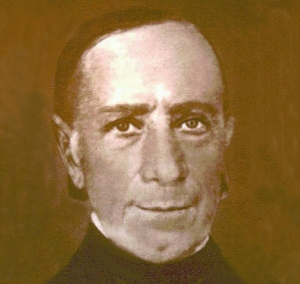 William Young Black, son of William Black and Mary Gardiner,was born on 20 Aug 1784 in Lisburn, Antrim, Ireland, died on 28 Jan 1873 in Rockville, Washington, Utah, United States at age 89, and was buried in Rockville, Washington, Utah, United States. William married Jane Johnston on 31 Jul 1822 in Lisburn, Antrim, Ireland. William Black died January 28, 1873, at Rockville, Kane County, Utah. He was a man of unassuming character, strictly honest and much loved by all his acquaintances, and he died firm in the faith which is known as the Mormon doctrine.
William Young Black, son of William Black and Mary Gardiner,was born on 20 Aug 1784 in Lisburn, Antrim, Ireland, died on 28 Jan 1873 in Rockville, Washington, Utah, United States at age 89, and was buried in Rockville, Washington, Utah, United States. William married Jane Johnston on 31 Jul 1822 in Lisburn, Antrim, Ireland. William Black died January 28, 1873, at Rockville, Kane County, Utah. He was a man of unassuming character, strictly honest and much loved by all his acquaintances, and he died firm in the faith which is known as the Mormon doctrine.
At the age of seventeen years, he enlisted in the Seventy-second Regiment of the British Army, also called Duke of Albanys own Highlanders, in which he served four years in Ireland and seventeen years abroad. From his records we quote: I landed in England about the first of March and was discharged and arrived at my fathers house on July 2nd of the same year. When I got home my mother, brothers and sisters were all dead; none were left but my father. On the 31st of July, 1822, I was married to Jane Johnston. I then joined the New Connexion Methodists and lived with my father until the 4th day of February, 1834, when he died, happy in the Lord. I then left my native country and went to Manchester, England, as my business at home failed. We then had a family of three sons and one daughter. My trade was very poor, but I had one shilling and five pence per day from the British Government which enabled us to get along middling well.
On January 14, 1839 we joined The Church of Jesus Christ of Latter-day Saints and were baptized by Elder William Clayton. (William Clayton later wrote the popular LDS hymn “Come, Come, ye Saints.”) I was soon ordained a teacher and at the next conference was ordained a priest and sent to Ireland with Brother John Taylor, one of the Twelve Apostles. In John Taylors, the Third President of the LDS Church, Autobiography, he recalls about this same time, in Manchester, 55-year-old William Black-a weaver, master hosier, and former British Army officer-and his wife, Jane Johnston Black, desired to return to Ireland with the message of the gospel. The Blacks had moved from Lisburn, County Antrim, in 1838 to seek work in Manchester, then known as the cotton manufacturing center of the world. They were introduced to the gospel by Elders William Clayton and Joseph Fielding and were baptized in 1839.In July, Elder Taylor agreed to accompany Brother McGuffy on a visit to his former home in Newry, County Down, where they planned to teach the gospel to his relatives and friends. The brethren were joined by William Black, who was a newly ordained priest.The three men boarded a steamship on the River Mersey on 27 July 1840 for the overnight voyage on the Irish Sea. The following morning they disembarked at Warrenpoint, County Down. Thus started the spreading of the gospel in Ireland. William continues, Brother Taylor did not remain long with me, as the people of that country did not receive the Gospel. Brother Curtis was sent to me and we opened a branch at Hillsburrow where four or five were baptized before I left. Brother Curtis stayed there. I came home on account of my family, as I had to draw my pension in Manchester. The next conference I was ordained an elder under the hands of Hiram Clark and John Smith, I believe, and was sent to Oldham and Rockdale, and with the help of James Kerigan built up two branches, and the Lord blessed our labors. I had to stop there two years. My family went to America in 1840 while I was on my mission. The Lord blessed me in all my labors and in December 1842 I began my journey to America.
 William left Liverpool England on the Swanton which was under the command of Captain Davenport along with two hundred and twelve Saints aboard, bound for Nauvoo, via New Orleans, under the direction of Elder Lorenzo Snow. In Elder Lorenzo Snow diary he points out that During the first four weeks of the voyage, continued head winds prevented the ship from progressing very fast, but on the seventeenth day of February the wind became fair. A few days after leaving Liverpool, the company was more fully organized by the appointment of Elders M. Auley and Robert Reed to act as counselors to Lorenzo Snow. The ship arrived in New Orleans on March 16, 1843. Christopher Layton, a passenger on the Swanton, is quoted in his Autobiography as saying After sailing for seven weeks and three days we arrived at New Orleans and were transferred to the steamer Amaranth in which we sailed up the Mississippi River. We arrived at St. Louis on March 29, 1843. We were now transferred from the steamer to a barge, and here we had to stay two weeks waiting for the ice to break up in the river. About the 7th of April a small steamer fastened a cable to our barge and tugged us up the river to Nauvoo where we arrived one very cold morning, April 12. Now rejoiced we were when we were safely across And there stood our Prophet
William left Liverpool England on the Swanton which was under the command of Captain Davenport along with two hundred and twelve Saints aboard, bound for Nauvoo, via New Orleans, under the direction of Elder Lorenzo Snow. In Elder Lorenzo Snow diary he points out that During the first four weeks of the voyage, continued head winds prevented the ship from progressing very fast, but on the seventeenth day of February the wind became fair. A few days after leaving Liverpool, the company was more fully organized by the appointment of Elders M. Auley and Robert Reed to act as counselors to Lorenzo Snow. The ship arrived in New Orleans on March 16, 1843. Christopher Layton, a passenger on the Swanton, is quoted in his Autobiography as saying After sailing for seven weeks and three days we arrived at New Orleans and were transferred to the steamer Amaranth in which we sailed up the Mississippi River. We arrived at St. Louis on March 29, 1843. We were now transferred from the steamer to a barge, and here we had to stay two weeks waiting for the ice to break up in the river. About the 7th of April a small steamer fastened a cable to our barge and tugged us up the river to Nauvoo where we arrived one very cold morning, April 12. Now rejoiced we were when we were safely across And there stood our Prophet 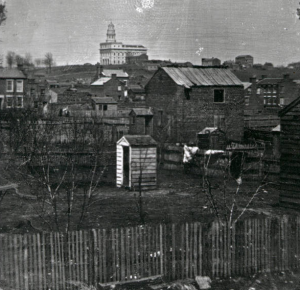 Joseph Smith on the banks of the river to welcome us. As he heartily grasped our hands, the fervently spoken words God bless you sank deep into our hearts, giving us a feeling of peace such as we had never known before. The Saints had congregated in front of the old post office building to gladly welcome us to this land and the beautiful city of Nauvoo. William Black continues by saying, I heard Joseph Smith preach on the first floor of the Temple, as that was the height of it then. I started for Augusta where my family was and found them safe and well, praise the Lord. I had to go twice a year to Canada to draw my pension. On the 11th day of May, 1845, was ordained a high priest by order of President Brigham Young, under the hands of Samuel Gully and William Huntington. I moved to Nauvoo in the fall of 1844 and lived there until the expulsion of the Saints. Then moved into Kanesville Iowa, where the family spent the next three years.
Joseph Smith on the banks of the river to welcome us. As he heartily grasped our hands, the fervently spoken words God bless you sank deep into our hearts, giving us a feeling of peace such as we had never known before. The Saints had congregated in front of the old post office building to gladly welcome us to this land and the beautiful city of Nauvoo. William Black continues by saying, I heard Joseph Smith preach on the first floor of the Temple, as that was the height of it then. I started for Augusta where my family was and found them safe and well, praise the Lord. I had to go twice a year to Canada to draw my pension. On the 11th day of May, 1845, was ordained a high priest by order of President Brigham Young, under the hands of Samuel Gully and William Huntington. I moved to Nauvoo in the fall of 1844 and lived there until the expulsion of the Saints. Then moved into Kanesville Iowa, where the family spent the next three years.
On June 12, 1850, the Captain James Pace Company, consisting of 100 wagons, left Kanesville, now known as Council Bluffs for the trek overland to Salt Lake City. Â William Y., Jane, William V., age 18, Joseph S., age 14, Johnson McDonald, age 4, and Mary Ann Donelley, along with her baby girl, made up the family.
Wagons going to Oregon, California, and Utah shared the same trail until they reached the continental divide at South Pass Wyoming. The trip from Wyoming, Nebraska to Salt Lake City Utah was 1,100 miles.
South Pass Wyoming is perhaps the most significant transportation-gateway through the Rocky Mountains. Indians, mountain men, Oregon Trail emigrants, Pony Express riders, and miners all recognized the value of this passageway straddling the Continental Divide. Bounded by the Wind River Range on the north and the Antilope Hills on the south, the pass offered overland travelers a broad, relatively level corridor between the Atlantic and Pacific watersheds.
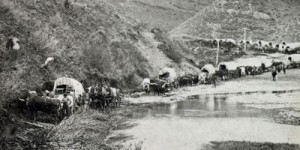 At South Pass the trail separates and is called “The parting of the ways.” Parting of the Ways marked the point where parties headed to California and those headed to Oregon parted ways. In fact, if your destination was either California or Oregon, either branch would serve you well. Those in need of supplies or worried about the condition of their members or livestock usually took the left fork, towards Fort Bridger. Since this was also the only route to Utah, Mormon parties always took the road to the left. But California-bound emigrants could and often did travel with their Oregon-bound friends as far as the middle of Idaho. Nonetheless, Parting of the Ways did mark a spot where many emigrants bid a tearful farewell to friends they would probably never see again.
At South Pass the trail separates and is called “The parting of the ways.” Parting of the Ways marked the point where parties headed to California and those headed to Oregon parted ways. In fact, if your destination was either California or Oregon, either branch would serve you well. Those in need of supplies or worried about the condition of their members or livestock usually took the left fork, towards Fort Bridger. Since this was also the only route to Utah, Mormon parties always took the road to the left. But California-bound emigrants could and often did travel with their Oregon-bound friends as far as the middle of Idaho. Nonetheless, Parting of the Ways did mark a spot where many emigrants bid a tearful farewell to friends they would probably never see again.
The transcontinental railroad reached Utah May 10, 1869, and from that time on emigrants could ride the rails all the way to Zion. From these two railheads, at Laramie and Benton, Mormon emigrants would have picked up the Overland-Bridger Pass Trail, followed it to Fort Bridger and then taken the Mormon Trail into Utah.
After traveling over 1,000 miles by ox team to the valley of the Great Salt Lake, in November of the same year, moved to Sanpete Valley, 140 miles south. In the spring I went by order of President Brigham Young and relocated in what is now known as Spring City which had been abandoned because of Indian depredations in the year 1858. The History of Spring City states, Among the first pioneers in the 1859 Resettlement of Spring City was William Y. Black, an Irish convert who requested and received President Youngs approval before his move to Little Denmark from Ft. Ephraim. On July 4, 1859 Father Black requested that he be allowed to go to little Denmark. Only 5 or 6 miles from here (Ft Ephraim).Brigham’s approval of this move come on July 12th with the clearly stated request that the Blacks did not infringe upon the rights of previous occupants, or rightful claimants. Accompanying Father Black in his pioneer venture were his wife Jane J., sons George and Joseph S, and their wives. Present day there is apermanent daughters of Utah Pioneer monument on the main street in Spring City that says in 1859 this area was settled permanently by families of James Allred, Wm. Black, James Ellis and a large Danish colony of gifted craftsmen and stone masons and others. They surveyed the land, raised abundant crops, and became known as the breadbasket of Utah. Built substantial homes and chapel of oolite stone, quarried south of town. The fort built west of the chapel in 1853 was burned by Indians.
In the fall of 1861, I moved to southern Utah on the Rio Virgin River, remaining there until 1873. During this time, records show that William Black and Jane Johnston Black resided along the banks of the Rio Virgin River in a location which is now known as Springdale, Utah, which is the entrance to the present day Zions National Park.
William Black died January 28, 1873, at Rockville, Kane County, Utah. He was a man of unassuming character, strictly honest and much loved by all his acquaintances, and he died firm in the faith which is known as Mormon doctrine. Excerpts from biographical sketch of William Young Black, by Henry J. Black, Manti, Utah. Annotated to reflect additional information.
Note: These lines may be found on his present tombstone in Rockville Cemetery: A noble veteran lieth here, His name and acts the Saints revere. He is blest with honors of the best, With his armour bright, he has gone to rest.
The original headstone is on display in the Utah Territorial Statehouse in Fillmore, Utah.

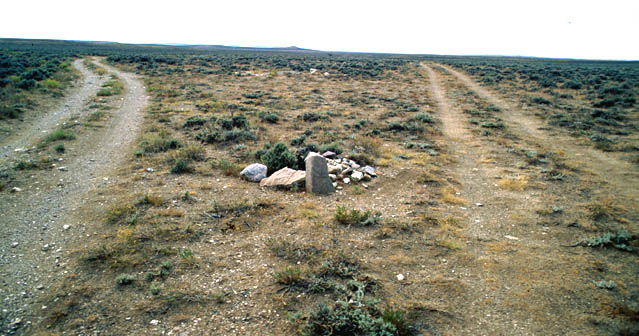
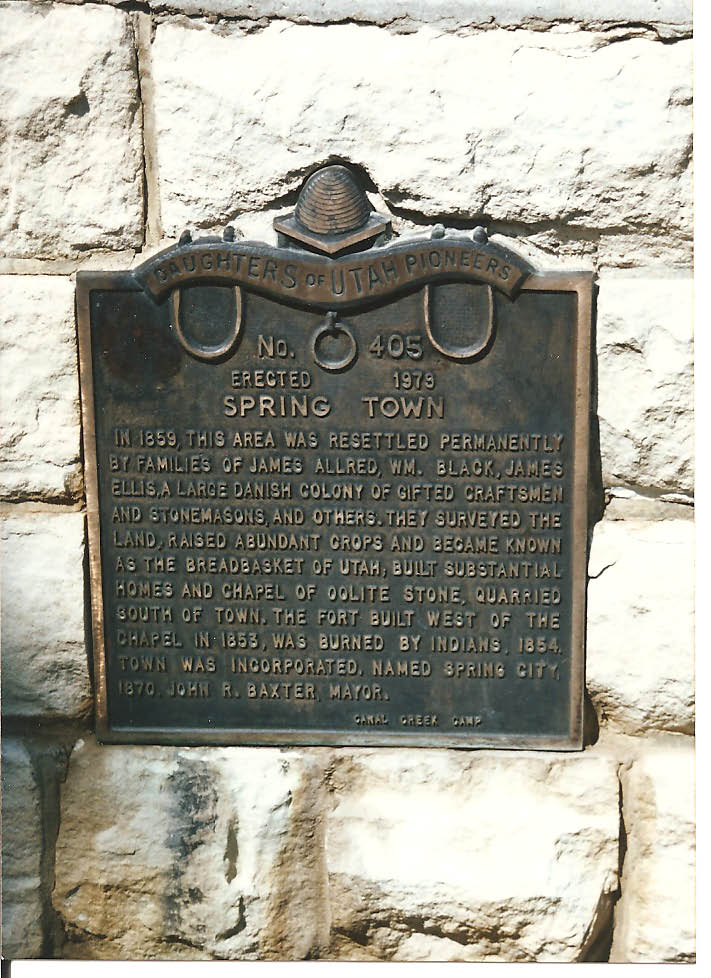
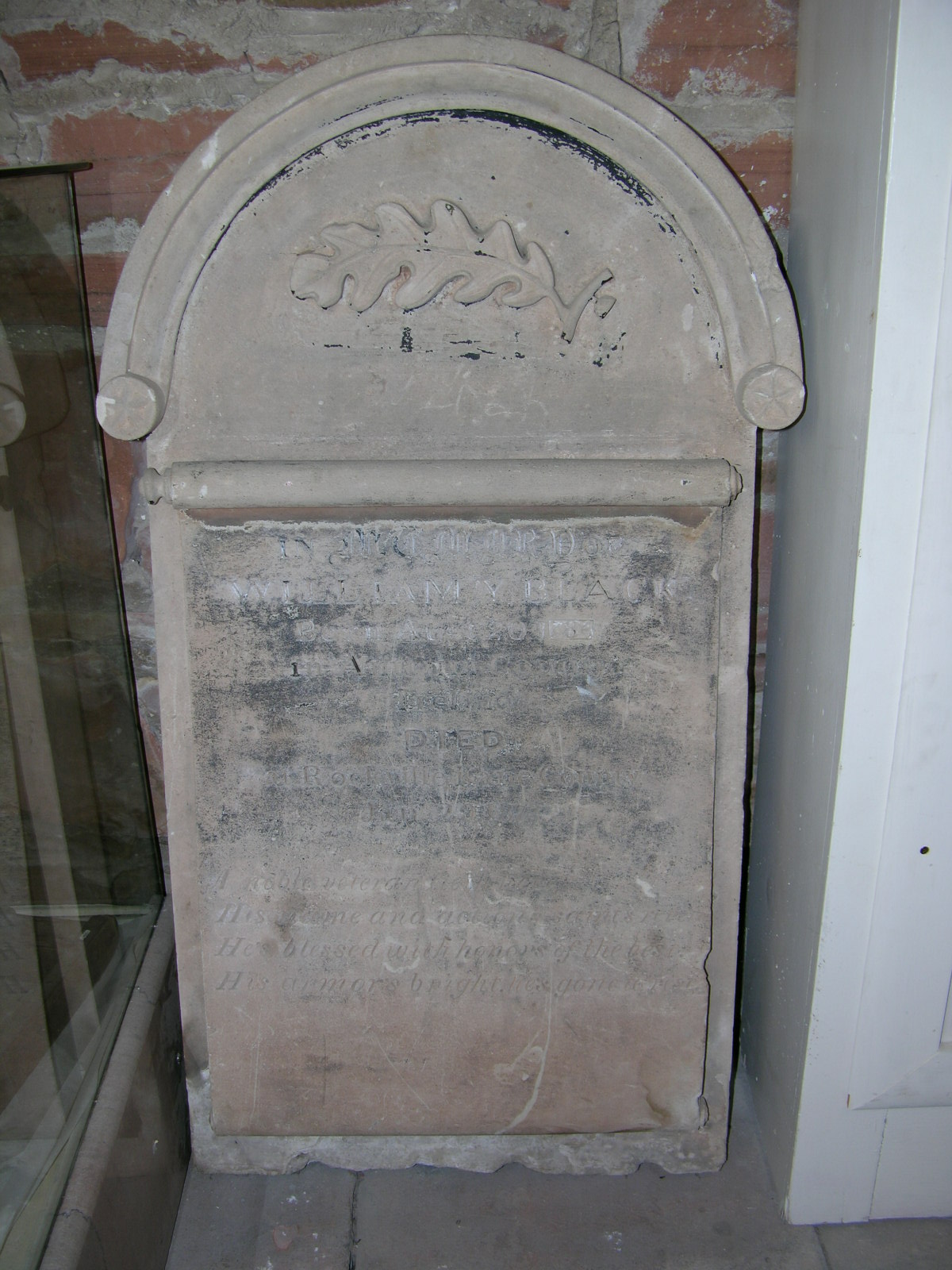
/-6.0374,54.5097,12/300x200@2x.png?access_token=pk.eyJ1IjoiamJlcmdlbiIsImEiOiJjanRxb3d1NWgwaHBuM3lvMzJ3emtyNWY4In0.xCCZGVjZrBAKn5C_O6q8CA)
/-113.0383,37.1611,12/300x200@2x.png?access_token=pk.eyJ1IjoiamJlcmdlbiIsImEiOiJjanRxb3d1NWgwaHBuM3lvMzJ3emtyNWY4In0.xCCZGVjZrBAKn5C_O6q8CA)